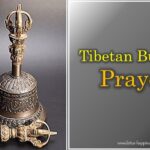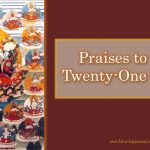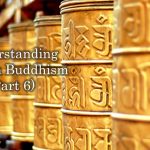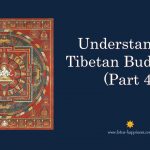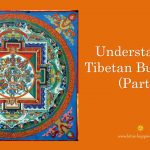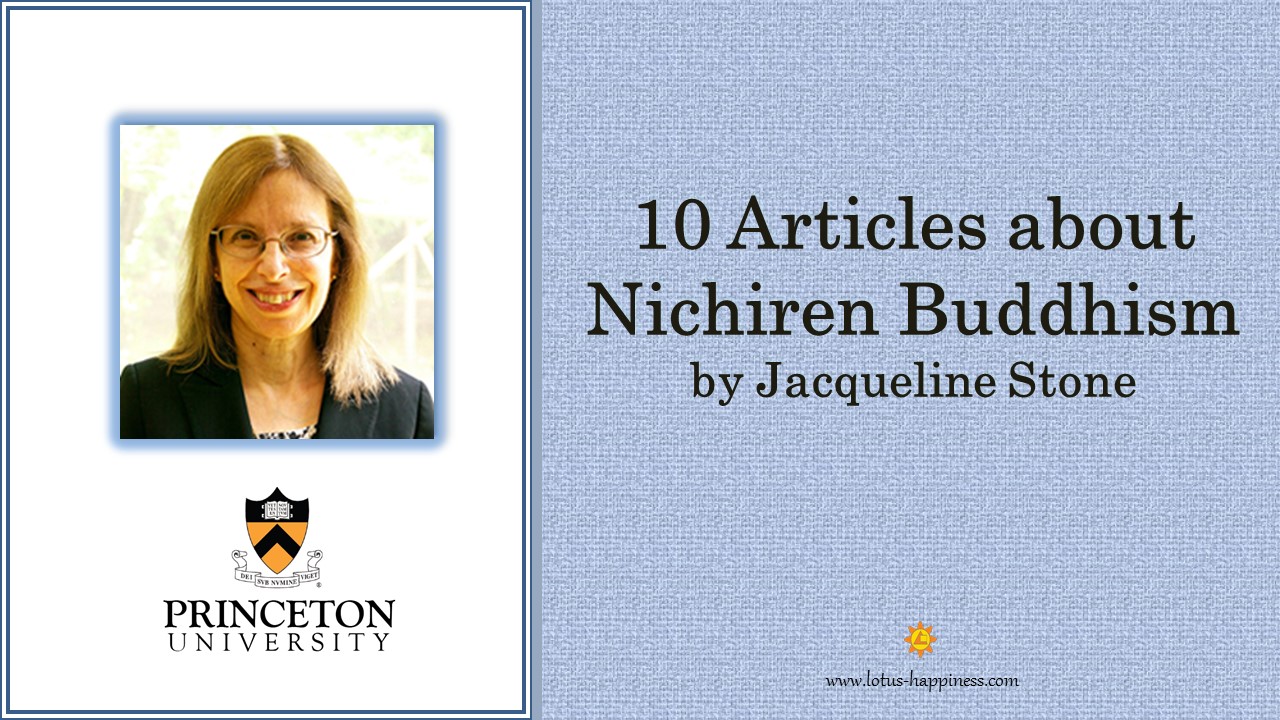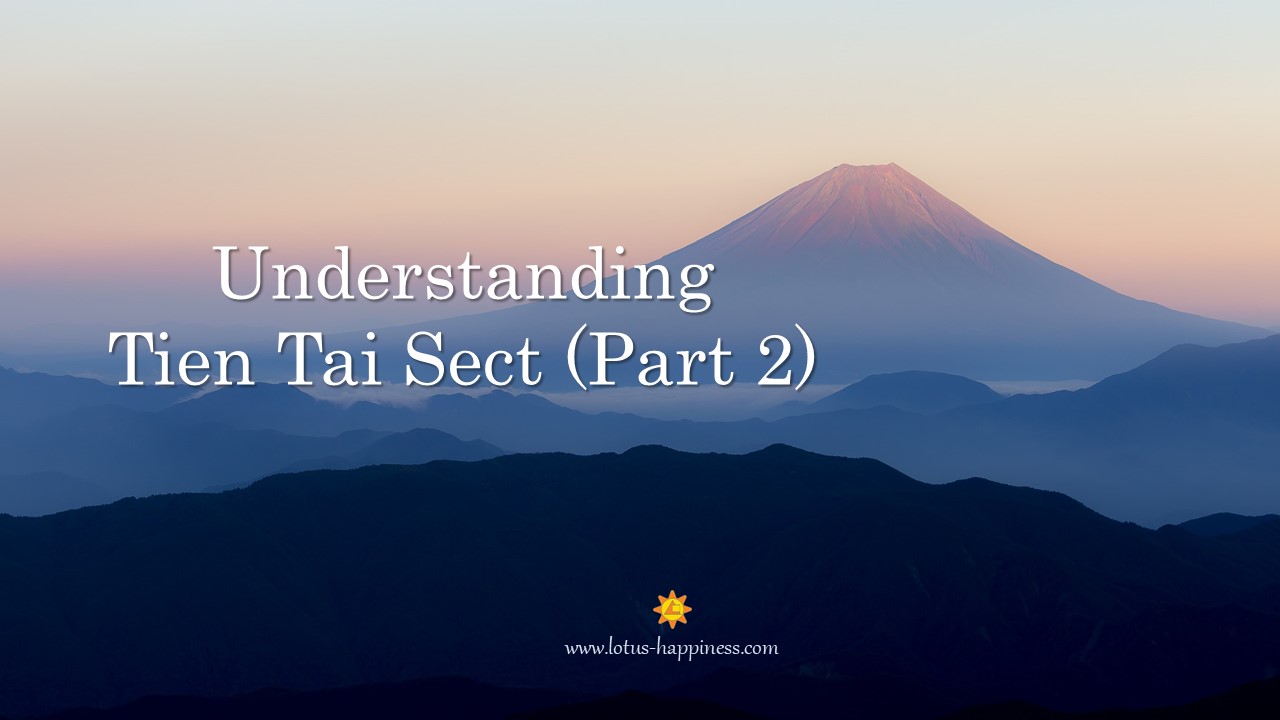
Understanding Tibetan Buddhism (Part 3)
Tibetan Buddhism and Vajrayana
In Buddhism, it can be classified into Esoteric Buddhism [密教] and Exoteric Buddhism [顯教]. In Buddhist doctrines, the latter, also known as Vyukta–upadesa in Sanskrit, emphasizes on phenomenological perception, while the former, also known as Guhya–upadesa in Sanskrit, emphasizes on ontological perception. Amongst the ten great sects of Chinese Buddhism, apart from Cheng Yen sect (see Chapter 75 to Chapter 79), all other sects are classified as Exoteric Buddhism. Tibetan Buddhism is the most typical and popular Esoteric Buddhism nowadays.
In terms of vehicle (or known as Yana in Sanskrit), Tibetan Buddhism, as commonly claimed by esoteric Buddhism, is regarded as Vajrayana [金剛乘], as compared to Hinayana [小乘] and Mahayana [大乘]. Vajra is a symbol derived from mythical thunderbolt of Indian deity called Indra, which represents non-destructiveness, and many other meanings.
Though all of them have a common objective of attaining Buddhahood, Vajrayana claims to be the very expedient one accomplishing in one life time, while it might take countless lifetimes or so-called Three Asamkhyeya [三大阿僧祇] in Hinayana and Mahayana. The former is known as the Tantra tradition [密教], while the latter is known as the Sutra tradition [經教].
Tantra means “continuous stream”, which describes a continuum that takes a practitioner from ignorance of an ordinary being to enlightenment of a Buddha. Tantra is a collective term for complex meditative practices that use the methods of ritual symbolic visualization for transforming one’s experience of conventional reality of body, speech and mind into a fully enlightened Buddha. Tantras include the Mandalas (sacred diagram), Mantras (magic spells), Mudras (hand gestures), etc. For details, please refer to Chapter 76.
The essence of the Vajrayana is the symbolic use of imagined divine forms, which represents one and the same time the five Skandhas, five points of space, the five evils, the five wisdoms, usually represented by the Five Buddhas, namely Vairocana, Aksobhya, Ratnasambhava, Amitabha and Amoghasiddhi.
Varjanana, as represented by Tantric Buddhism, is regarded as the highest and most sacred stage in the development of Buddhism. Vajrayana is a path of the most direct nature imaginable. Tibetans consider the Tantric practices to be the most potent and efficient method of attaining enlightenment.
Features of Vajrayana Buddhism
As compared to the Mahayana Buddhism, the development of Vajrayana demonstrates the following features:
- It transforms one’s body, speech and mind — The aim of Tantric practice is to transform one’s body, speech and mind into those of a fully enlightened Buddha by special Yogic means. Thus, a variety of ritual and magical methods have been devised, involving the use of specialized forms such as Mandala, Mantra and Mudra, bell (Ghanta) and hand drum (Damaru), which is believed to produce powerful spiritual effects.
- It points out the “view” [見] in the direct manner — “View” here means the nature of reality [實性] as it is. It is not merely explained through reasoning, nor by analogies that allow us to understand that all phenomena are empty, but can be “seen” face-to-face through the Vajrayana practices. It is not just conceptual, but can be experienced during the course of the initiation and the subsequent meditation practices.
- It has many skilful means — a comprehensive and systematic path for the practitioners to follow, such as wisdom, prosperity, health, etc. step-by-step to achieve one’s goals. The supreme skilful practices of Anuttara Tantras allow the practitioners to achieve complete realization in this very life.
- It is without difficulties — In traditional Buddhist teachings, one has to avoid any object of the sense, as it causes us to remain in suffering and in illusion. The Vajrayana approach is based upon the underlying or inherent purity of all things, which are utilized as part of the very process of awakening. This approach may be easier in the sense that it does not require austerity.
- It is for those with the sharpest faculties [利根] — It is said that those practitioners with most skill can achieve Buddhahood in this very life through Vajrayana.
Some traditions of Tibetan Buddhism
Being a Tantric practitioner in Tibet, he must find a suitable master called Guru (or called Lama in Tibetan Buddhism) to act as his spiritual preceptor, in order to be guided through the complex and powerful meditation. Once the practitioner finds one with whom he has a personal affinity, he must prove his sincerity purity and resolve to Guru before he is accepted to be a disciple (or called Chela in Tibetan Buddhism); for his spiritual welfare will then be responsibility of the Guru’s instructions as a patient obeys the instructions of his doctor. He should also serve and have great devotion for his Guru.
After the practitioner has carried out a number of strict “preliminaries” to purify himself, his Guru will initiate him into Tantric practices (or known as Tantric initiation). An initiation (Abhiseka in Sanskrit) signifies the following:
- It helps to remove the spiritual obstruction – sprinkling water upon the practitioner.
- It transmits a spiritual power from the Guru, i.e. “empowerment” in Tantric practice.
- It permits access to a body of the scriptures and the oral instructions required to understand and practice them properly.
- It authorizes the practitioner to address himself in a particular way to a certain deity (called Yidam in Tibet, which means ‘to link the mind’.
The details of preliminaries and Tantric initiation will be discussed later.
At the initiation, the Guru chooses a Mantra and a Yidam appropriate to the practitioner’s character type, and introduces him to the Mandala (mystic circle or sacred diagram) of the Yidam. To realize the enlightened state, the practitioner must do more than meditate on Emptiness, he must meditate or visualize also on the Buddha’s form, and regard himself as an embodiment of that deity with all qualities. Through meditation on the Buddha’s form, the practitioner perceives the entire universe as a Buddhaland or Pure Land; through meditation on the Buddha’s speech, he perceives all sound as the sound of Mantra; through meditation on the Buddha’s mind, he experiences all thought as the radiance of pure awareness. The details of Mandala and Yidam will be discussed later.
In Tibet, a Guru is generally called a Lama. A Lama need not be a monk. Only his knowledge and skills in Tantric practices count. The Lama plays such important role in Tibetan Buddhism, which is often called Lamaism. Generally, the practitioner (Chela, i.e. student) should follow the instructions from his teacher (Guru, i.e. mentor) in the lineage of a particular school. Apart from taking refuge to the Buddha, Dharma and Sangha, the practitioner should take refuge to his Guru as well.
One of the main duties of the Lama is to guide a dying person as the spirit, or commonly called “soul”, left his body. For 49 days, the spirit exists in Bardo, the state between death and rebirth. During this period, the instructions given by the Lama will help the Bardo reach either rebirth or enlightenment. The importance of Barbo state is always stressed in Tibetan Buddhism.
Another tradition of Tibetan Buddhism is the hierarchy of Dalai Lama. On the death of a Dalai Lama, a search begins for the child who is his latest incarnation. Once found, the child is educated by the elder Lamas in the preparation of his role of being the Dalai Lama again.
Kanjur and Tanjur
Tibetan doctrine recognizes three vehicles to reach the final goal of Buddhism. The methods take into account the different levels of spiritual development of the practitioners. The first is Theravada or Hinayana, which brings the practitioner to the goal of self-emancipation through self-discipline. The second is Mahayana, which is the path to philosophical insight for the sake of saving others. The third is the Vajrayana, which is the way of Tantric rites and mystical meditations, or visualization. The Tantric practitioners may take 14 to 20 years to study the first two vehicles before they are ready for the Tantras.
The great scholar and writer BuSton (1290-1364) divided all translated canonical and sub-canonical works, as well as commentaries and independent writings into two parts:
- Kanjur – “translated word” containing works attributed to the historical Buddha Shakyamuni, to various transcendent Buddhas and to the Tantric divinities identified as Buddhas
- Tanjur – “translated treatise” containing translated writings of Indian scholars and teachers.
The Kanjur comprises 100 or 108 printed volumes and the Tanjur comprises 225 volumes. These vast collections of Indian Buddhist literatures provide the doctrinal basis for Tibetan Buddhism. The most significant parts are:
- Texts on monastic discipline — those of the Indian Buddhist school known as Mulasarvastivadin, closely related to Vinaya texts of the Theravadin.
- Literature on the “Perfection of Wisdom” — providing philosophical basis of Tibetan Buddhism.
- Great Mahayana Sutras — Sutras expounding the doctrines of Middle Way, Mere-consciousness, etc.
- Tantras — including the descriptions of the great divinities and their respective sets of Mandalas, collections of Mantras by which the divinities are invoked, the rites and symbols, etc.

